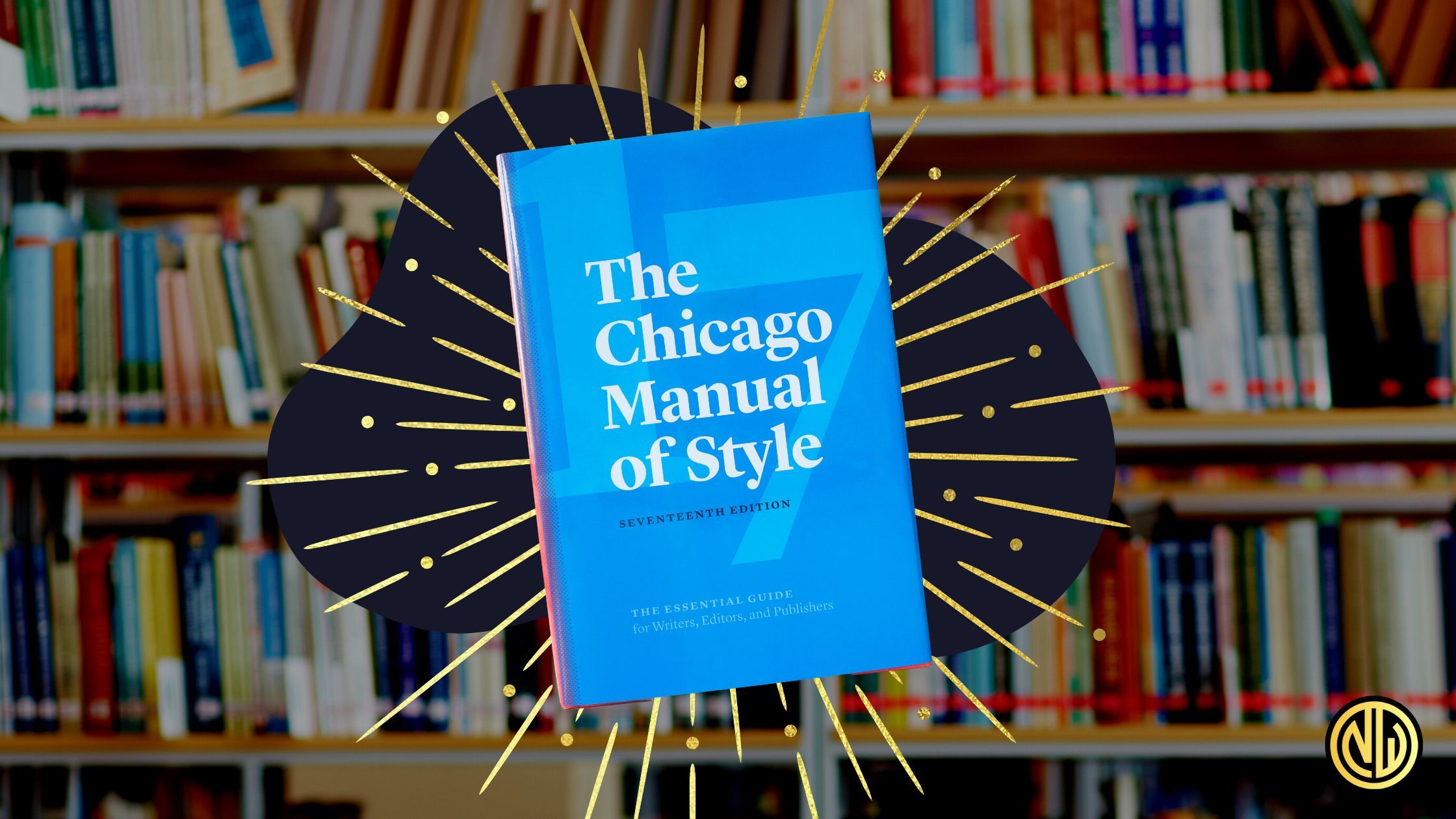If you want to write a book or scholarly article, you’ll need to source citations. The Chicago Manual of Style can help.
The Chicago Manual of Style is the stylebook of choice for professional authors, scholars and science writers. Although AP style is more common for news and shorter articles, CMOS is often preferred for more academic work that pulls from many information sources and requires clear notes and bibliography.
Key Takeaways
- Chicago style gives clear instructions for author-date style, publication date and bibliography entries.
- You’ve probably seen Chicago citation examples in stories before without realizing it.
- Chicago style has some grammar and syntax preferences as well, including details for article title, quotation marks, and numbered footnotes.
- A version of CMOS, the Turabian style, refers to a version that is taught to high school and college students for writing research papers.
If you’re a grammar nerd, you’ll absolutely love CMOS (pronounced “sea moss”). Here’s why the Chicago Manual of Style is kickass.
Table of Contents
When Was the Chicago Manual of Style Established?
First published in 1906, the Chicago Manual of Style is the gold standard for book publishing. The full title of the first edition was long: “Manual of Style: Being a Compilation of the Typographical Rules in Force at the University of Chicago Press, to Which Are Appended Specimens of Type in Use.” (We were so wordy back then!)
The style book is published by the University of Chicago press, and is notable for being the only style guide from an academic institution to be considered mainstream. At a high level, Chicago style focuses more on elegance and form, whereas AP style focuses more on getting information across as quickly and clearly as possible. This blog post about Chicago style is written in AP style, and yes, it’s a mindfuck. 😵💫
One of the primary objectives of the Chicago Manual of Style is to ensure clarity and consistency in written communication. The book provides guidelines on grammar, punctuation, capitalization, citation styles and formatting. By standardizing these elements, the manual helps to eliminate confusion, improve readability, and maintain a professional and polished appearance in writing.
The Chicago Manual of Style has undergone several revisions since its initial publication in 1906. With each new edition, it adapts to keep pace with the evolving trends and technologies in the writing industry. In the newest and 17th edition, the manual includes guidelines on electronic sources, social media citations, and inclusive language, reflecting the changing landscape of writing and publishing in the digital age.
Ways to Cite in Chicago Style
The Chicago Manual of Style offers detailed instructions on footnotes, endnotes, and bibliographies, enabling scholars to accurately cite their sources and provide comprehensive documentation for their findings. By following guidelines, students and researchers can demonstrate their commitment to intellectual integrity and bolster the credibility of their work.
Here are the two ways CMOS formats these citations.
Author-Date System
Author-date citations make short, parenthetical references to sources throughout a piece, then give a list of works cited at the end. This approach is a bit ugly at times, but it gives readers page-specific context, which can be helpful in things like manuals.
In author-date style, the in-text citation will reference the last name of the source author, the year of the source’s publication, and the page number or range of pages referenced. Here’s an example from the University of Chicago’s webpage about CMOS:
“The primary cheeses used in Chicago-style pizza are mozzarella, Parmesan, and Romano (Bruno 1983, 4).”
Then, at the end of the story, a list of works cited would list that book. It would be formatted as follows:
Bruno, Pasquale, Jr. The Great Chicago-Style Pizza Cookbook. New York: McGraw-Hill, 1983.
Numbered Notes and Bibliography Style
You can also use footnotes in Chicago style. This might be a preferable approach if you have a lot of sources, or you just don’t want to clutter up your story. When doing in-text citations, write the number either as a subscript or superscript, then use this corresponding number at the end of the piece in the proper bibliography entry.
Here is how you’d do that in the sentence below:
For best results, stick to high-quality tomatoes, and avoid adding tomato paste to your Chicago-style pizza sauce.¹
Since you don’t have room for page numbers in the in-text citation, you’ll need to put them in your sources list.
1. Pasquale Bruno Jr., The Great Chicago-Style Pizza Cookbook (New York: McGraw-Hill, 1983), 3.
Writers doing deep research need a bibliography system to organize and reference their sources throughout their work. This reference list of bibliography entries is placed at the end, though some authors choose to place their reference list at the end of each chapter.
Frequently Asked Questions
Does Chicago Style Use Italics?
Chicago style will italicize a book or publication title, whereas AP style puts the title in quotation marks.
Does Chicago Style Use Serial Commas?
You might also know the serial comma as the Oxford comma. Functionally, they’re the same: In a list of three or more items in a sentence, a comma separates each item. Example: “The breakfast special comes with bacon, eggs, and toast.”
Technically, the Oxford comma technically refers to the Oxford style guide; the same comma in the Chicago style is known as the serial comma.
Pro Tip:Some website style guides purposely forgo the serial comma to create more action and speed in sentences.
Ramp Up Your Style Game Today
What’s great about Chicago style is that its rules will force you to be more rigorous and precise with your writing. In aligning with this editing industry standard, you’ll also become a better writer along the way. ◆
Thanks For Reading 🙏🏼
Keep up the momentum with one or more of these next steps:
💬 Leave a comment below. Let me know a takeaway or thought you had from this post.
📣 Share this post with your network or a friend. Sharing helps spread the word, and posts are formatted to be both easy to read and easy to curate, with nice image previews. You'll look savvy and informed.
📲 Connect on another platform. I’m currently publishing in these places. If you are too, say hello:
- Medium: Articles and thought essays.
- Threads: Casual, Twitter-esque commentary.
- Instagram: Media appearances, and some occasional IRL posts to Stories.
- TikTok: Occasional video scraps from reporting and life.
- LinkedIn: Buttoned-up posts.
📬 Sign up for my free email list. “The Morning Walk” is a free newsletter about writing, online publishing, and personal entrepreneurship. Learn more and browse past editions here.
🏕 Up your writing game. Camp Wordsmith® is a content marketing strategy program for small business owners, service providers, and online professionals. Learn more here.
📊 Hire me for consulting. I provide 1-on-1 consultations through my company, Hefty Media Group. We're a certified diversity supplier with the National Gay & Lesbian Chamber of Commerce. Learn more here.


